What does your birthstone signify?
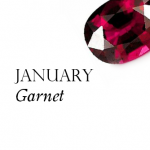 This stone was used in Medieval times to protect against poison, injury, nightmares, insecurity, and melancholy of the spirit. Today garnet symbolizes faith and truth, as well as loyalty, affection, and general joy.
This stone was used in Medieval times to protect against poison, injury, nightmares, insecurity, and melancholy of the spirit. Today garnet symbolizes faith and truth, as well as loyalty, affection, and general joy.
Origin: The word “garnet”comes from the Latin word “granatum”, meaning “pomegranate”, because the stone resembles pomegranate seeds in shape and color. It comes in nearly every color except for blue, but is most popular in its signature red.
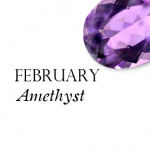 Amethyst was the stone of Saint Valentine (of Valentine’s day), who was known to wear a brooch of amethyst engraved with an image of Cupid. Amethyst is believed to heal sickness, sharpen intellect, protect against sorcery, and bring victory in battle. Both the amethyst and its purple color represent royalty.
Amethyst was the stone of Saint Valentine (of Valentine’s day), who was known to wear a brooch of amethyst engraved with an image of Cupid. Amethyst is believed to heal sickness, sharpen intellect, protect against sorcery, and bring victory in battle. Both the amethyst and its purple color represent royalty.
Origin:The ancient Greeks believed that this gemstone held many powers, among them protection against intoxication. In fact, the word Amethyst comes from the Greek word “amethystos,” meaning sober. In ancient Greece, the gemstone was associated with the god of wine, and it was common practice to serve this beverage from Amethyst goblets in the belief that this would prevent overindulgence.
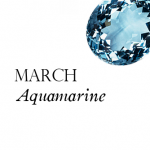 Aquamarine stones can vary in hue, ranging from dark blue to light blue-green. Soothsayers claimed aquamarine stones helped to access their fortune telling powers. Aquamarine has been used as the glass in glasses since The Roman Emperor Nero used it in his monocle 2,000 years ago.
Aquamarine stones can vary in hue, ranging from dark blue to light blue-green. Soothsayers claimed aquamarine stones helped to access their fortune telling powers. Aquamarine has been used as the glass in glasses since The Roman Emperor Nero used it in his monocle 2,000 years ago.
Origin: The Roman words “aqua”, meaning water, and “mare”, meaning sea, combine to make the word aquamarine. They are the stone of the Roman god Neptune (Greek god Poseidon), the god of the sea. Because of this they were thought to bring safety to voyages and protection against storms and sea monsters.
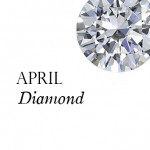 Commonly used as engagement rings, diamonds today are a symbol of everlasting love and faith. Their color ranges from transparent to opaque and colorless to dark black, with many tints and colors in between. They are the hardest material known to man, and have been coveted as the most beautiful by many cultures throughout history.
Commonly used as engagement rings, diamonds today are a symbol of everlasting love and faith. Their color ranges from transparent to opaque and colorless to dark black, with many tints and colors in between. They are the hardest material known to man, and have been coveted as the most beautiful by many cultures throughout history.
Origin: The diamond was named for its incredible strength, originating from the Latin word “adamantem”, meaning “the hardest metal”. Ancient Hindus believed that diamonds were created by bolts of lightening striking the ground.
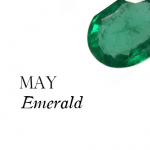 The emerald’s hue ranges from light to dark shades of green, and the deeper the green the more valuable the stone. Emerald is notorious for the flaws that often occur, and are sometimes hidden by treatment with oil. However, some people desire a few minute flaws in their stone to prove the authenticity of their gem.
The emerald’s hue ranges from light to dark shades of green, and the deeper the green the more valuable the stone. Emerald is notorious for the flaws that often occur, and are sometimes hidden by treatment with oil. However, some people desire a few minute flaws in their stone to prove the authenticity of their gem.
Origin: The word “emerald” comes from the Latin word “smaragdus” which means “green gem”. Farther back, it originates from Arabic “barq”, meaning lightening. Ireland was nicknamed the Emerald Isle for its lush vegetation and frequent rainfall.
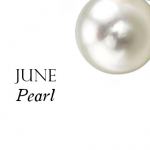 Pearls represent beauty, love, and hope. They come in many colors besides the traditional white, each with a different meaning. Blue predicts that you will find love, gold represents wealth, and pink means good fortune. Pearls are the only gem that require no carving or polishing to reach their most desirable state – they are found just as they are, naturally created inside one oyster or mussel out of a thousand.
Pearls represent beauty, love, and hope. They come in many colors besides the traditional white, each with a different meaning. Blue predicts that you will find love, gold represents wealth, and pink means good fortune. Pearls are the only gem that require no carving or polishing to reach their most desirable state – they are found just as they are, naturally created inside one oyster or mussel out of a thousand.
Origin: Persian myths say pearls come from the tears of spirits, and in Ancient India they believed that they were a result of the morning dew. Romans and Greeks thought pearls were the water that dripped off Aphrodite’s body as she emerged from the sea, and for this are sometimes called the ‘Fairies of the Water’.
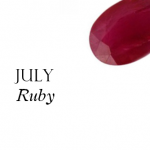 Rubies were thought to have protective powers during battle, and Kings in medieval times would wear them in hopes that the prophetic power the stone possessed would help them with decision-making. They represent fiery passion, desire, devotion, and are thought to have the power to heal heartbreak.
Rubies were thought to have protective powers during battle, and Kings in medieval times would wear them in hopes that the prophetic power the stone possessed would help them with decision-making. They represent fiery passion, desire, devotion, and are thought to have the power to heal heartbreak.
Origin: When mentioned in the Bible, God calls the ruby the most precious of the twelve gemstones. The word is derived from the Latin word “ruber”, meaning simply “red”.
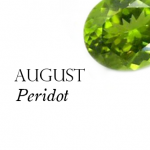 Peridot comes in a variety of olivine shades, usually in lighter hues than the emerald. It has been found in Norway, Burma, Red Sea islands, Hawaii, and sometimes even inside meteorites. Peridot brings luck, peace, success, health, and are known to attract love and calm anger.
Peridot comes in a variety of olivine shades, usually in lighter hues than the emerald. It has been found in Norway, Burma, Red Sea islands, Hawaii, and sometimes even inside meteorites. Peridot brings luck, peace, success, health, and are known to attract love and calm anger.
Origin: The etymology of the word “peridot” is unknown, most likely because for a long time they were confused with emeralds. The Egyptian Queen Cleopatra had a penchant for the stone, and it is thought that much of her emerald jewelry was really mistaken peridot.
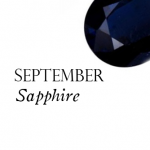 The striking deep blue of a quality sapphire is reminiscent of a cloudless night sky. Ancient civilizations believed that the world was set upon an enormous sapphire, which painted the sky blue with its reflection. This legend, as well as the belief that the ten commandments were inscribed upon tablets made of sapphire, gives September’s birthstone a royal place among gemstones.
The striking deep blue of a quality sapphire is reminiscent of a cloudless night sky. Ancient civilizations believed that the world was set upon an enormous sapphire, which painted the sky blue with its reflection. This legend, as well as the belief that the ten commandments were inscribed upon tablets made of sapphire, gives September’s birthstone a royal place among gemstones.
Origin: Named after the Greek word “sapphirus”, meaning blue, Sapphires have long been a favorite among priests and kings, who considered them symbolic of wisdom and purity. These gemstones are prominent among the British Crown Jewels, and Prince Charles chose this as the engagement stone for his fiance, Princess Diana. again.
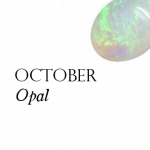 Opals symbolize fortune, hope, purity, and were thought to give the gift of prophecy. It is also rumored that they render the wearer invisible, and is therefore the favorite stone of thieves and mischief-makers. It’s said that if worn by someone who was not born in October, an opal is unlucky and will crack.
Opals symbolize fortune, hope, purity, and were thought to give the gift of prophecy. It is also rumored that they render the wearer invisible, and is therefore the favorite stone of thieves and mischief-makers. It’s said that if worn by someone who was not born in October, an opal is unlucky and will crack.
Origin: In Greek mythology, opal was created from Zeus’s tears of joy after defeating the Titans. The word originates from Greek “opallios”, meaning “precious stone”. An alternate birthstone for October, Pink Tourmaline has the seemingly magical property of pyroelectricity.
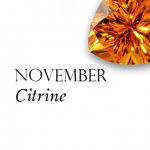 Topaz comes in an array of colors – blue, pale green, yellow, pink, red (the most valuable color), brown, and even black. The larges topaz stone ever known was found in Brazil and weighs nearly 600 pounds.
Topaz comes in an array of colors – blue, pale green, yellow, pink, red (the most valuable color), brown, and even black. The larges topaz stone ever known was found in Brazil and weighs nearly 600 pounds.
Origin: The name comes from a Sanskrit word meaning “fire”. In the Middle Ages, it was used to cool down boiling water as well as people in a rage and dangerously high fevers. It was once thought to increase wisdom and prevent mental sickness. To cure bad eyesight, people would soak the stone in wine for three days, then rub the liquid on their eyes.
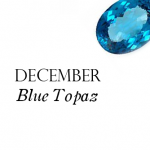 As cool and inviting as a blue lake on a blistering summer day, Blue Topaz is derived from the Sanskrit word “tapas,” meaning fire. This is because Blue Topaz was considered by ancient civilizations to have cooling properties. Not only was it believed to cool boiling water when thrown into the pot, but to calm hot tempers as well! This gemstone was credited with many other healing powers, among them the ability to cure insanity, asthma, weak vision and insomnia. The Blue Topaz was even thought to have magical properties in its ability to make its wearer invisible in a threatening situation. An alternate birthstone for December is the Turquoise.
As cool and inviting as a blue lake on a blistering summer day, Blue Topaz is derived from the Sanskrit word “tapas,” meaning fire. This is because Blue Topaz was considered by ancient civilizations to have cooling properties. Not only was it believed to cool boiling water when thrown into the pot, but to calm hot tempers as well! This gemstone was credited with many other healing powers, among them the ability to cure insanity, asthma, weak vision and insomnia. The Blue Topaz was even thought to have magical properties in its ability to make its wearer invisible in a threatening situation. An alternate birthstone for December is the Turquoise.